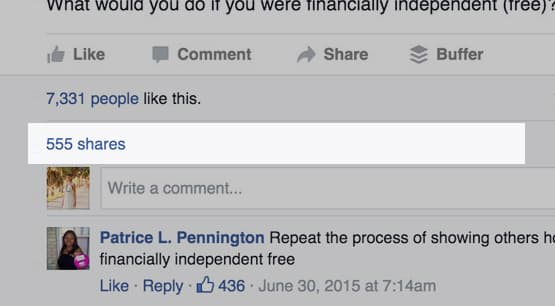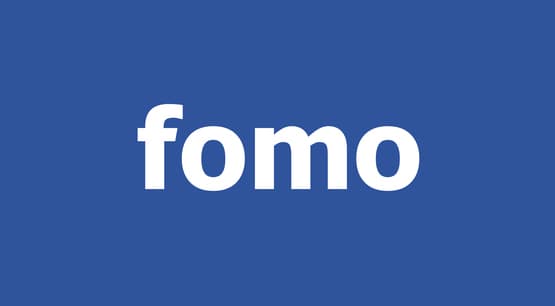Do Funny Facebook Posts Get Better Engagement and Reach?

They say laughter is the best medicine, but is it the best marketing tool? It shouldn’t surprise you to learn that it’s somewhat effective. If you’ve been paying attention to the way Facebook works over the last half a decade or so, you’ve already discovered that emotional engagement is crucial to building an attached and powerful audience.
This is, after all, why meme pages, pages with inspirational feeds, and other such organizations gain millions of followers and pageviews on every post, while brands struggle to build beyond a couple thousand followers.
Of course, it’s not all sunshine and rainbows. Facebook posts get more engagement when they are emotionally resonant. You’ll note that I didn’t say emotionally positive. That’s why so many popular posts are stirring up outrage. Negative emotions are just as powerful as positive emotions, and in some ways even more so.
With a positive emotional post, you’re likely to give it a like, or a heart reaction, and move on. With a negative emotional post, you’re more likely to get it a scowl reaction, but you’re also more likely to leave a comment. You might drop in to refute the point made in the meme, or to argue with someone in the comments. With all of the modern discourse surrounding racial injustice, gun control, and other contentious issues, it’s no surprise that there is tons of fodder for incredibly emotional posts.
Emotions and Reach
According to studies performed last year, there is a strong correlation between emotional reactions and post shares. Positive or outrageous emotional reactions tend to elicit shares on Facebook, as the user wants their friends to either share in the positive emotions, or agree with them about the outrage.
Shares, of course, are a metric involved in reach. Every time a user shares a post, the friends of that user get a chance to see the post. Only a fraction of them will, because of the way Facebook filters posts, but that number may be increasing.
Facebook’s ongoing adjustments to their algorithm, announced earlier this year, claim to put posts from friends and family ahead of posts from brands. However, a post from a brand shared by a family member is going to count as a post from that family member. I would imagine it has a bit lower priority than a post that originates from that friend or family member, but it also has the power of however many thousands or hundreds of thousands of shares it has behind it. Don’t worry; meme shares will never die.
The hierarchy is clear. At the top, according to Facebook, is organic posts from close friends and family. If you know about EdgeRank, you know that you only see posts from people you engage with, be they people or brand pages. Some friends and family may be active but never show up on the feed. Those people may get a slight boost with the new algorithms, but many will still never appear.
Below those posts are extremely popular viral content. Viral videos, memes shared a million times, and any content shared by friends and family is going to be right up there at the top.
Below those are the filler posts. This is the content that doesn’t usually make the cut, but makes it in for one reason or another. Maybe Facebook is trying to vary up what you see so you feel more engaged with your friend circles. Maybe its just a series of ad posts. Maybe it’s another Facebook social experiment.
And then, of course, you have the 90% or more posts that you never have a chance of seeing. Branded content with no social value or emotional clout fall into this category. After all, if your brand posts have 6% reach, that means 94% of your audience doesn’t have a chance of seeing it. At least, not without a little payment on your part.
How You Can Use Emotion
If you read fiction about dystopian capitalist societies, you often read about corporations soullessly and cynically abusing emotion to get every single penny they can squeeze out of individuals, and the jaded nature of the audience that recognizes this, yet falls for it anyway.
In some senses, that’s where we are today. When you’re using Facebook for marketing, it’s clear that emotion plays a big part in how your content can be shared and distributed, how users engage with your posts, and the impression you build around your brand.
The first thing you need to do is spend some time with some introspection. What is your brand, and what is the general user perception of your brand? What kind of topics can you use to engage with your audience, and what kinds of topics should be left alone? How do your personal feelings as owner of the brand play into things? Which emotional perspectives should you use, and which should you avoid?
For example: Nike’s recent endorsement of Kaepernick. This is an advertising play by a huge corporation with exploitative sweatshops, playing on the current US political climate involving racism. It stirs up a lot of emotions, both positive and negative, depending on the perspective of the audience. More importantly, it gets people talking about Nike, continuing to cement their position as a dominant brand, regardless of the realities of how they got there.
In a more general sense, here are some questions you might think about.
- Are you a small brand or a larger business? Small brands tend to get away with taking political perspectives more readily when those perspectives are liberal; the backlash against conservative racist or discriminatory views tends to hurt brands.
- Are you willing to stir up controversy, or would you prefer to keep your audience copacetic? If you stick to positive emotions and inspirational images, you can still play into emotional responses without the potential negative backlash.
- Are you capable of being subtle with your emotional plays, or are you more likely to be called out as a manipulator? Playing off base greed, excitement, and inspiration is easier to do subtly, or to be written off as part of natural marketing. Trying to stir up anger, pure happiness, or contentious issues is less subtle and can’t be easily tied to marketing.
Now let’s talk about individual emotional responses, and how you can use them to your advantage.
Fear
There are two ways fear manifests in social media. One of them is obviously not useful for marketing. With the oncoming hurricane in the Carolinas, you could prey on the fear of the populace, but what good would that do? It’s trashy and ineffective to scare people about losing everything they own just to sell some clothes or something.
The real way you want to use fear is FOMO. FOMO is the Fear Of Missing Out. It’s a different kind of fear; the fear that everyone else is in on some secret, some value, you don’t have.
Thankfully, this kind of fear is a lot easier to capitalize on, and it’s a lot more subtle. Mention the number of people who already converted; those are people who are ahead of the pack, the trendsetters, the leaders. Ask questions, hinting through those questions that there’s some secret other people know that you don’t. Make the reader feel like there’s something they’re missing out on, but that you’re giving them the opportunity to attain.
Happiness
Making people happy is an easy way to boost reach and associate your brand with positive emotions. People won’t remember the exact posts you made a year from now, but they’ll remember that this brand name makes them feel happier, and that encourages them to buy from you as opposed to your competition. Thankfully, it’s easy to share happy content.
What kind of content? Photos of cute animals are always great. Everyone loves the amusing antics of animals, dogs and cats especially. You can also showcase children and happy families, which can also open doors for diversity inclusion. Happiness can also tie into inspirational posts; be happy for this person who achieved something great, and be inspired by their achievement to pursue your own success (with the help of our product, of course!)
Excitement
Inspiring excitement in your audience is great for situations where an immediate purchase is possible. Excitement leads to impulsiveness, which can be seen in everything from time-limited (FOMO) deals to mascots dancing with signs in front of businesses.
Excitement is a little harder to tap into. You can’t just tell people to be excited. You can, however, use exciting language, bright colors, and even showcase your product in the most exciting way possible.
Of course, this is easier done in some cases than others. A corporate budget app isn’t going to have an exciting screenshot to be found, but a nice profit chart with green rising arrows can spur along those feelings quite nicely.
Nostalgia
Inspiring nostalgia in your target audience brings with it elements of fondness, happy memories, and longing to return to the good old days, regardless of the actual trials or tribulations involved in those days.
The best way to inspire nostalgia is to bring something back. You see this with seasonal favorites like pumpkin spice or the McRib, and you can see it with the resurgence of 80s and 90s toys, rebooted movie franchises, and even music like RetroWave.
You can bring up nostalgia in many ways. A simple way is to just post an old nostalgic item and ask people to hit a reaction if they remember it. You can also tie it into your products; maybe you’re making a product with optional color selections, and you can choose the retro transparent purple plastic as an option.
Curiosity
The curiosity gap is one of the most well-known and well-abused forms of emotional manipulation in marketing, and as such, it’s one you’re most likely to be familiar with. Even something as simple as a landing page that asks a user how well their site complies with modern SEO best practices is spurring the curiosity gap. You as a webmaster want to know, so you click to see what kind of tool or test they’ll give you.
At the most extreme, the curiosity gap leads to clickbait. Here are 10 reasons the curiosity gap works: You won’t believe #7!
I’m not actually going to give you a list, you get the idea. Even just read that, you wondered immediately what I could possibly write on that list that you wouldn’t believe. Even if you’re savvy enough to not give me the satisfaction of your click, most users are not.
Unfortunately, clickbait is well-known and well-penalized on Facebook and other sites. It’s too transparent and too exploitative even for Facebook. You need to be more subtle with it. Ask your readers a question that you imply you can help them answer.
There are many other emotions you can dig into to use for your marketing. Pick any emotion, and think about ways it can be turned on its head and used to gain eyes on a landing page. Pretty much anything will work, though obviously some are harder to use than others. I don’t like to touch Anger, for example. Angry people aren’t likely to convert, they’re more likely to seek out negative reviews. Explore different emotions, run different tests, and figure out which emotions your audience responds to. You’ll find something, I guarantee it.










